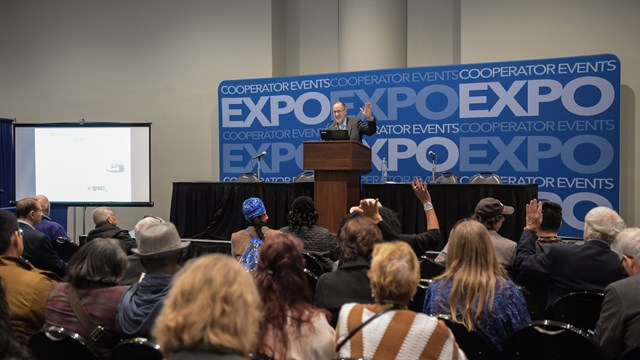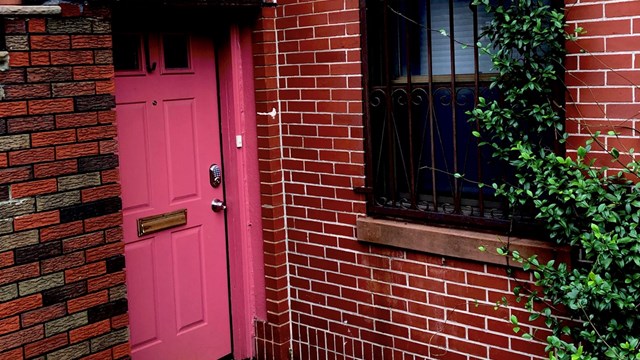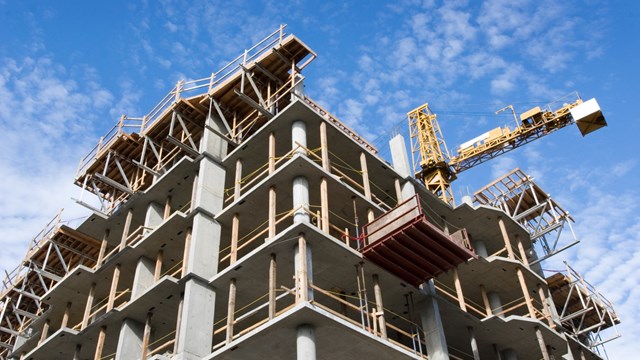There’s a reason that film directors, when making movies, first call for LIGHTS before CAMERA and ACTION. Lighting sets the tone for the entire picture. Soft lighting makes a pretty face even prettier (or a not-so pretty one, not half-bad). Saturation produces a dream-like effect. And well-placed shadows, of course, bring out the horror in horror films.
While it may seem a stretch to compare the lobby of your condo to a major motion picture, the two have one thing in common: lights mean everything. When thinking of interior design, most people think about things like wall treatments, furnishings, and where to put the couch relative to the coffee table. Lighting doesn’t always spring to mind right away. But how we light our living spaces—including the common areas of multifamily buildings and condominiums—make a huge difference in the mood, warmth, and even the perceived size of a space.
All those things can impact “curb appeal,” and by extension, value. There are a million ways to light a hallway, lobby, or common room, and a host of professionals specializing in just that.
Out of the Dark
How important is lighting to the overall atmosphere in a building’s common areas? “In a word: critical,” says Marilyn Sygrove, president of Sygrove Associates Design Group Inc. in Manhattan. “It makes the difference between tenement and luxury.” If you think that’s an exaggeration, you’ve never flipped through those tabloids where they have pictures of stars with no makeup—and bad lighting.
Time was, there was one kind of light bulb: an incandescent, the kind we were told that Thomas A. Edison invented in his Menlo Park, New Jersey lab (although a number of other inventors came up with similar ideas). You got to choose between 40, 60, 75, or 100 watts, although you could sometimes find a dimmer bulb to use in your refrigerator—or, if you were a detective, a brighter one to hang from a fixture on the ceiling in your interrogation room.
But now it’s lights out for incandescent bulbs. On January 1st, federal legislation that was originally enacted in 2007 bans traditional 40 and 60-watt incandescent light bulbs for general lighting in favor of more energy-efficient lighting options. The 100-watt bulb was banned in 2012, followed by the 75-watt bulb.
There are still a dizzying array of options available: fluorescents, compact fluorescents (CFLs), halogens, LEDs, and more. These days, the light bulb aisle at Lowe’s has as many choices as a Build-a-Bear.
“In the past, consumers have used wattage to rate the brightness of a lamp,” explains Joan Silver of Capitol Lighting, one of the nation’s leading retailers for residential lighting. “However, wattage is not an accurate indicator of lamp brightness. Energy-efficient light sources such as compact fluorescent lamps (CFLs) have much lower wattage while still producing a great amount of light. Wattage is simply a measure of the amount of energy consumed.” This why you can buy a CFL bulb that is 40W, and it’s bright enough to use to do makeup. The more accurate measurement, in terms of light brightness, is lumens. “As more consumers become aware of this common misconception, lumens will become one of the most important factors in lamp selection,” Silver explains.
Seven watts of LED gives off the same amount of light as 13 watts of a fluorescent, or 30 watts of an incandescent bulb. If there are, say, 100 60-watt incandescent bulbs all over the building, replacing them with LED bulbs save 4,600 watts of energy. That adds up to real money in a co-op, condo or HOA’s energy bill.
But the most important factor in buying light bulbs is color temperature. “The quality of the lights, including the color, sets the tone and the ambiance of the building,” says Philip Finkelstein, president of Illuminations in Rockville Centre.
In this case, “color” does not refer to actual color, but rather the brightness of the bulb. Color, Sygrove says, is measured in degrees Kelvin. For example, “4,200 K is daylight,” she explains. And, 2,700 is warm light. There are options in between, 3,000, 3,100. We typically like to stay in the 3,000 to 3,500 Kelvin range.”
Since the primary purpose of light is to allow us to see, bright light may seem the most desirable to the layperson. But what works perfectly well in the emergency room of a hospital might not be the most aesthetic solution to creating a pleasant mood in your sitting area. One does not propose to one’s beloved under the harsh glare of a 4,200 Kelvin-lit room. Candlelight equals romance.
Then there is price. LED bulbs are more expensive than old-school ones, but they last much longer and save considerable money in energy bills. And they are not as pricey as they once were. “You can go to Home Depot and buy LED bulbs that are in a very competitive price range,” Sygrove says, “but it’s limited in color types. You can get very warm or cold. It’s comparable with the price of fluorescents.”
How is all of this information used by professionals to light common areas?
Light It Up
With so many different kinds of bulbs, and different kinds of fixtures—and different budgets—the possibilities are almost limitless.
“For lobbies, we like a variety of lighting,” Sygrove says. “Overhead general illumination for the open areas, with more mood-setting lights in lounge areas, whether it’s sconces or table lamps.” This is also used on landings, near elevator doors, and in other small common areas throughout the building. If there is a doorman area, it would be lit overhead and underneath, she says, for function.
But this is general. All lighting is determined by the aesthetic of the building. “The design scheme is what determines the lighting,” Sygrove says. “If the client wants to go modern, recessed lighting that is not decorative is used, whereas a client who wants a more traditional or period look of the building would opt for something more decorative.”
“There’s so many variables,” Sygrove says. “We like to show clients a mock-up before they purchase the fixtures.” It’s easy for me, she says, to write about blue lights that aren’t actually blue, or to suggest where those lights may be seen in the outside world; it’s another thing, though, to actually see how they look in your lobby.
That brings up a key point: lighting is more complicated than it initially appears. The answer to the old question of how many board members it takes to change a light bulb is less obvious than it seems. There are plenty of mistakes that are often made.
One common mistake: mismatched bulbs. Finkelstein recalls that on the floor of his building, they installed different color bulbs along the hallway to his apartment. To some, this might not seem like a big deal. To someone versed in lighting design, this is the visual equivalent of nails on a chalkboard. “I made them change it,” he says. “I told them they could do what they wanted on other floors, but on mine, they had to be the same.”
This can be repeated outside, too. In the back area of his complex, Finkelstein says, there were too many lights on during the night, especially in the winter. “When the pool is closed, you don’t need seven lights on it.”
He suggests having lighting design as an agenda item at a shareholders’ meeting. “See what the shareholders need and want,” he recommends. For all you know, there might be a professional lighting designer in one of those units—or at least someone who knows blue lights from green ones.
Finkelstein also recommends studying the various rebates available from the utility companies for making certain improvements. “Don’t use compact fluorescents instead of LEDs when LEDs get you a rebate,” he advises. This information is readily available on the websites of the major utility companies.
Boards and HOAs are always looking for ways to cut costs. Lighting is the perfect place to begin. So much money can be saved over time by making improvements to the fixtures and bulbs that it’s cost-effective. And in the long term, you should hire a professional lighting designer, who can help you see the light.
Greg Olear is a freelance writer and a frequent contributor to The Cooperator. Staff writer Christy Smith-Sloman also contributed to this article.







Leave a Comment